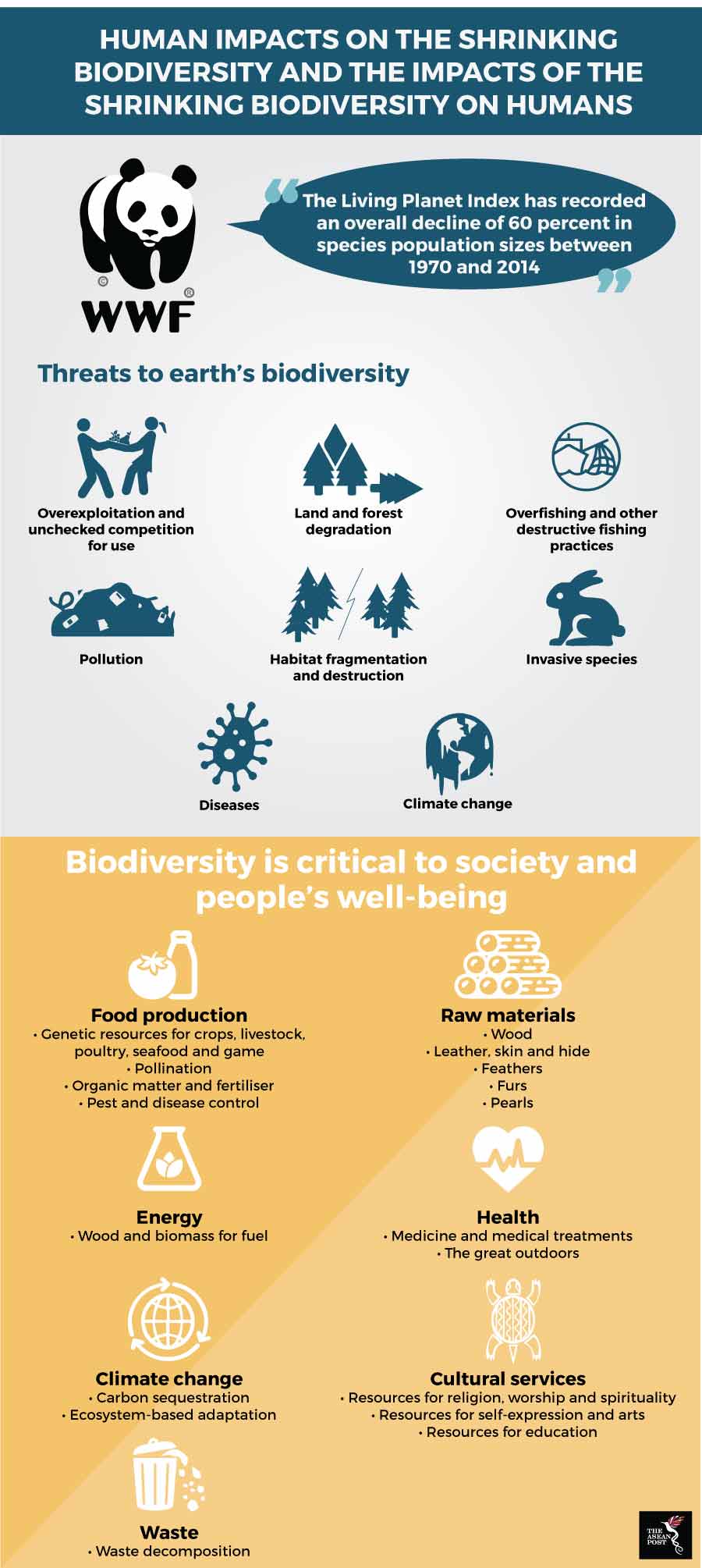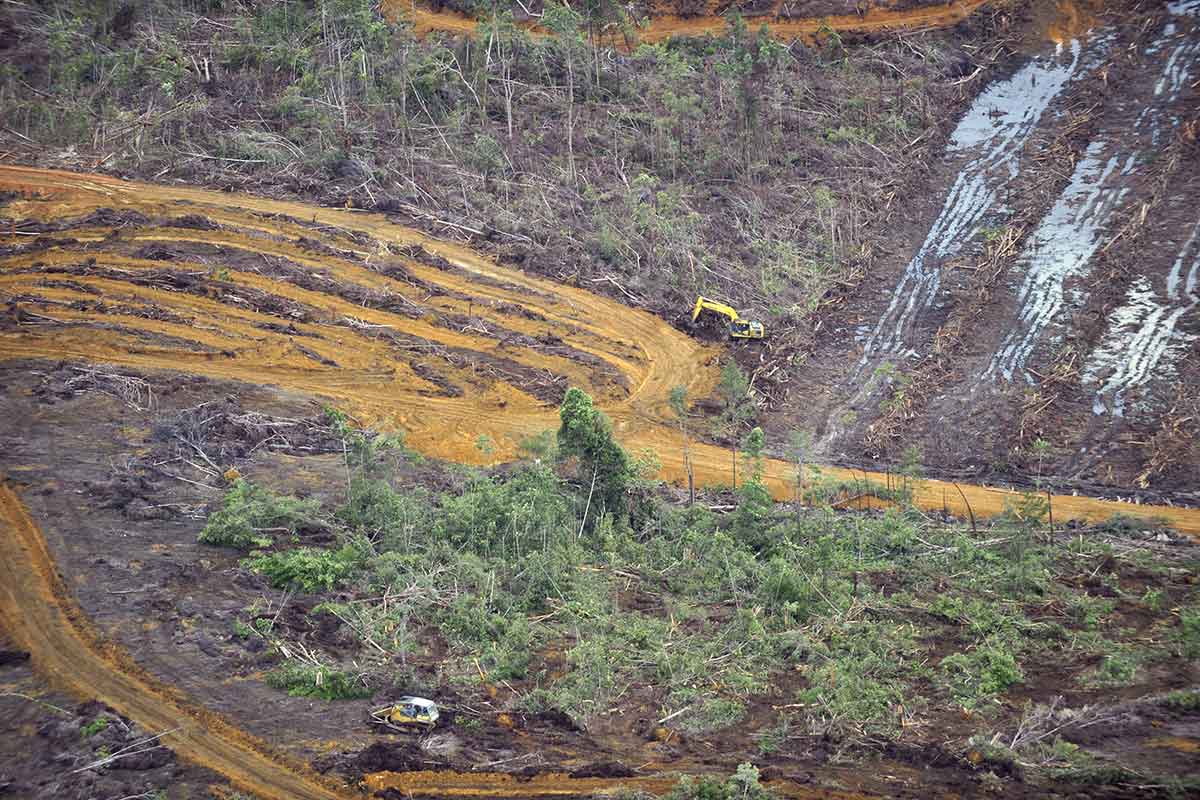The world’s biodiversity is at extreme risk, undergoing an exceptional decline in the past few decades and its fragility is threatening the well-being and survival of mankind. In the last 44 year between 1970 to 2014, the average population size of wildlife has declined 60 percent, while availability of suitable habitats for mammals have declined 22 percent from 1970 to 2010.
According to the report on the Living Planet Index (LPI) 2018 released this week by the World Wildlife Fund (WWF) International, in terms of extinction risks based on the IUCN Red List of Threatened Species, bird and mammal pollinators are in decline, along with wild relatives of farmed and domesticated species. These trends, coupled with disappearing pollinating bees and decreasing soil biodiversity, can threaten mankind’s ability to produce food in the future.
The LPI also reported on the assessment of regional Biodiversity Intactness Index (BII), comparing its present biodiversity to that of the past when the region was exposed to minimal human pressures. The most recent global BII shows a deterioration from 81.6 percent in 1970 to 78.6 percent in 2014. However, regional BII in tropical and subtropical forest biomes suggests an even more rapid decline – from 57.3 percent in 2001, to 54.9 percent in 2012. This is considered alarming as the BII estimates are conservative and do not incorporate climate change impacts.
No excuses
The report stated that while climate change is a growing threat, the main drivers of biodiversity loss is the overexploitation of species, agriculture and land conversion. Director General of WWF International, Marco Lambertini, said that the shocking decline is a grim reminder and the ultimate indicator of the pressure human activities exert on the planet.
“…science has never been clearer about the consequences of our impact. There has never been more awareness – nor such rapidly increasing investment in finding solutions. Today, we have the knowledge and means to redefine our relationship with the planet. There is no excuse for inaction.
“Our day-to-day life, health and livelihoods depend on a healthy planet. There cannot be a healthy, happy and prosperous future for people on a planet with a destabilised climate, depleted oceans and rivers, degraded land and empty forests, all stripped of biodiversity, the web of life that sustains us all,” he said in the report’s foreword.
Biodiversity is often referred to as the ‘web of life’ or the interlinkages between the many varieties of living plants, animals and micro-organisms, as well as their ecosystems. The report also touched on land degradation stating that forest loss has accelerated in tropical forests, where some of the highest levels of biodiversity have been recorded. This has many impacts on species, the quality of habitats and the functioning of ecosystems.

Sources: Various sources.
Heathy future and future health
In an effort to ensure a healthy future and our future health, experts from the Ministries of Environment and Health of ASEAN member states are convening for a three-day workshop addressing the inter-linkages between human health and biodiversity in the region. The workshop is part of ASEAN’s integration of conservation and sustainable use of biodiversity in development sectors such as health, agriculture, fisheries, forestry, science, technology, and education.
Executive Director of the ASEAN Centre for Biodiversity, international biodiversity expert, Dr Theresa Mundita S Lim, said that at the event, national experts will discuss country experiences and best practices on mainstreaming biodiversity and health, and incorporating biodiversity considerations in national and regional health programs.
“Losing our biodiversity means losing the source of raw materials for our medicines. It is important that government agencies and pharmaceutical companies integrate biodiversity conservation in their policies, decisions and programs,” Dr Lim emphasised.
Lim said that the event hopes to also highlights the importance of biodiversity in sustainable development, poverty reduction, climate change adaptation and mitigation, business, trade and international cooperation. Experts will also identify gaps in integrating biodiversity conservation and health programs in national strategies and promote transboundary and regional cooperation.
Humans cannot exist in isolation from the web of life. No amount of technology can sustain life the way healthy biodiversity can. Life as it is, is made possible by biodiversity, its products and services. As succinctly put by Lambertini, our generation has been given the opportunity to either found the global movement to better our relationship with the planet, or to fail doing so. The choice is ours.
Related articles:
Marine protected areas increasing fish stocks
